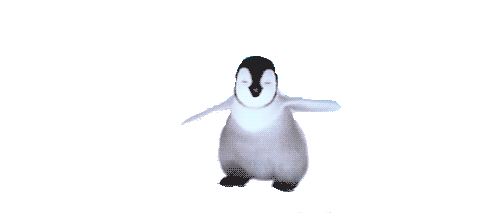About
 Pretty Poppin Penguins!
Pretty Poppin Penguins! 
BASIC FACTS ABOUT PENGUINS
Our dear penguin friends are aquatic, flightless birds. The have wing bones that are used for swimming, and unfortunately these wing bones do not permit them to fly. Penguins are highly adapted to life in the water, and their tuxedo-like appearance works as a camouflage to keep them safe from predators underwater. Almost all penguins live in the southern hemisphere; this type of habitat enables them to catch their food underwater as well as raise their young on land.
Some staples to a penguin's diet are krill, fish and squid.
Penguins who live closer to the equator tend to eat more fish then penguins who live closer to Antarctica. Those living in Artarctica tend to eat more squid and krill.
Smaller penguins live in warmer climates than larger penguins because the latter's large body mass gives them the ability to cope with harsher, colder climates.
Population-wise, the type of penguin with the highest population are the Macaroni penguins. There are approximately 11 654 000 Macaroni penguins in the world. As for the lowest population number, the Galapagos penguin, an endangered animal, has a population of anywhere between 6,000-15,000 individuals.
Penguins are pretty social birds. Many types of penguins tend to feed, swim, and nest in groups, especially during breeding season. During this breeding season, penguins form large groups of thousands of penguins known as "rookeries". Since there are so many penguins in each group, each penguin develops a distinct call which enables them to find their mate and chicks in the group. Many species feed, swim and nest in groups. During the breeding season, some species form large groups, or “rookeries”, that include thousands of penguins. Each penguin has a distinct call, allowing
them to easily find their mate and chicks whilst in the "rookery."
For the link to the information on About page, click here.
To access the reference page, click here.
 Pretty Poppin Penguins!
Pretty Poppin Penguins! 
 Pretty Poppin Penguins!
Pretty Poppin Penguins! 